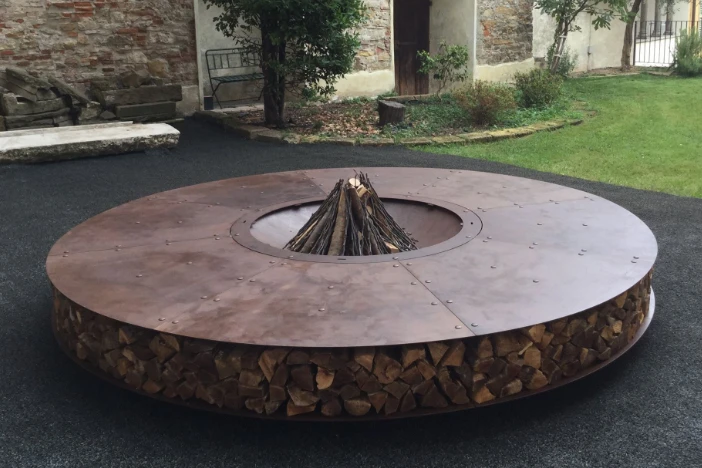
What physical properties are most important?
Now that you’ve chosen the type of fire structure you’d like, it’s time to select which material best suits your needs and taste. There are a number of popular options, each with its own set of pros and cons to consider.
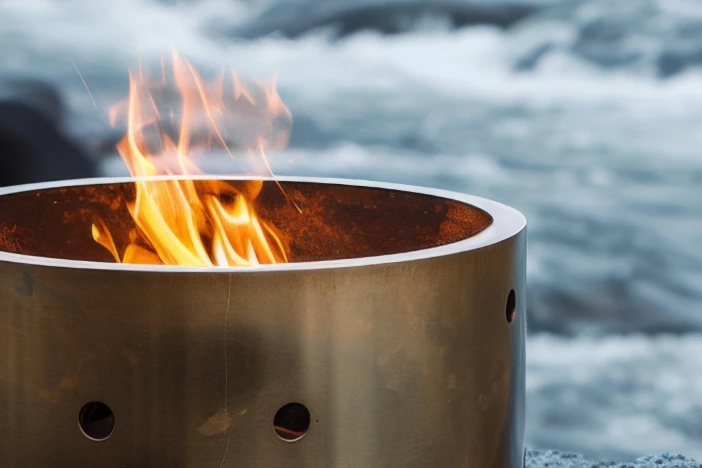
Metal – Corrosion-resistance & heat conductivity
Metal fire pits come in a wide variety of shapes, styles and aesthetic qualities.
Steel
This metallic alloy is strong, heavy and comparatively expensive. Untreated steel is susceptible to rust and needs to be powder-coated to protect it from the elements. Stainless steel fire pits, on the other hand, contain additional chromium which makes them corrosion-resistant. Stainless steel a great choice for harsh climates. It’s also easy to clean and maintain. Unfinished steel has a sleek industrial look while powder-coating the metal with paint gives it a contemporary vibe. Oxidized iron finishes are often used to create a timeworn rustic feel.
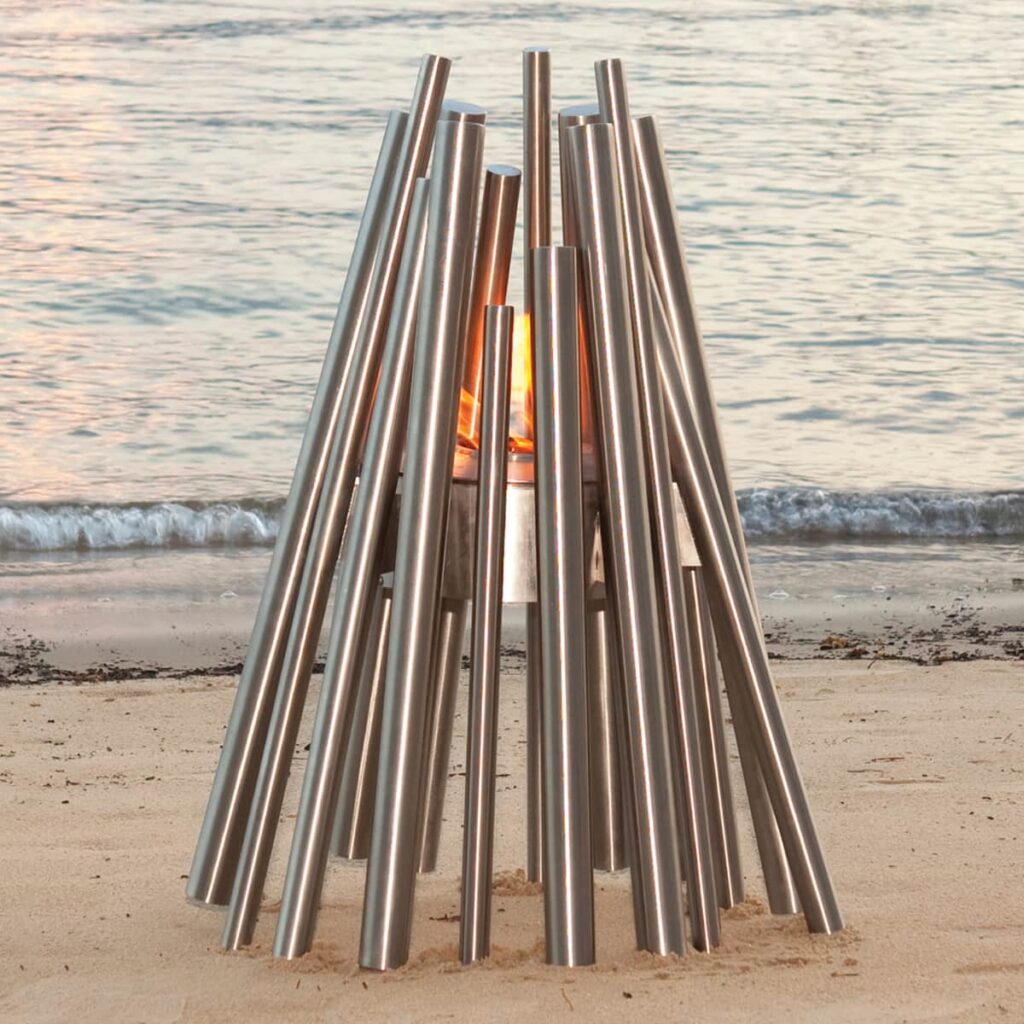
Cast Iron
This metal is sturdy, quite heavy, relatively inexpensive and retains heat. Consequently, cast iron fire pits are extremely effective in cold weather and favorable to cooking applications. This black carbon alloy is resistant to corrosion but may become discolored if exposed to moisture unless treated regularly. It also heats quickly and can be dangerous if touched before cooling.
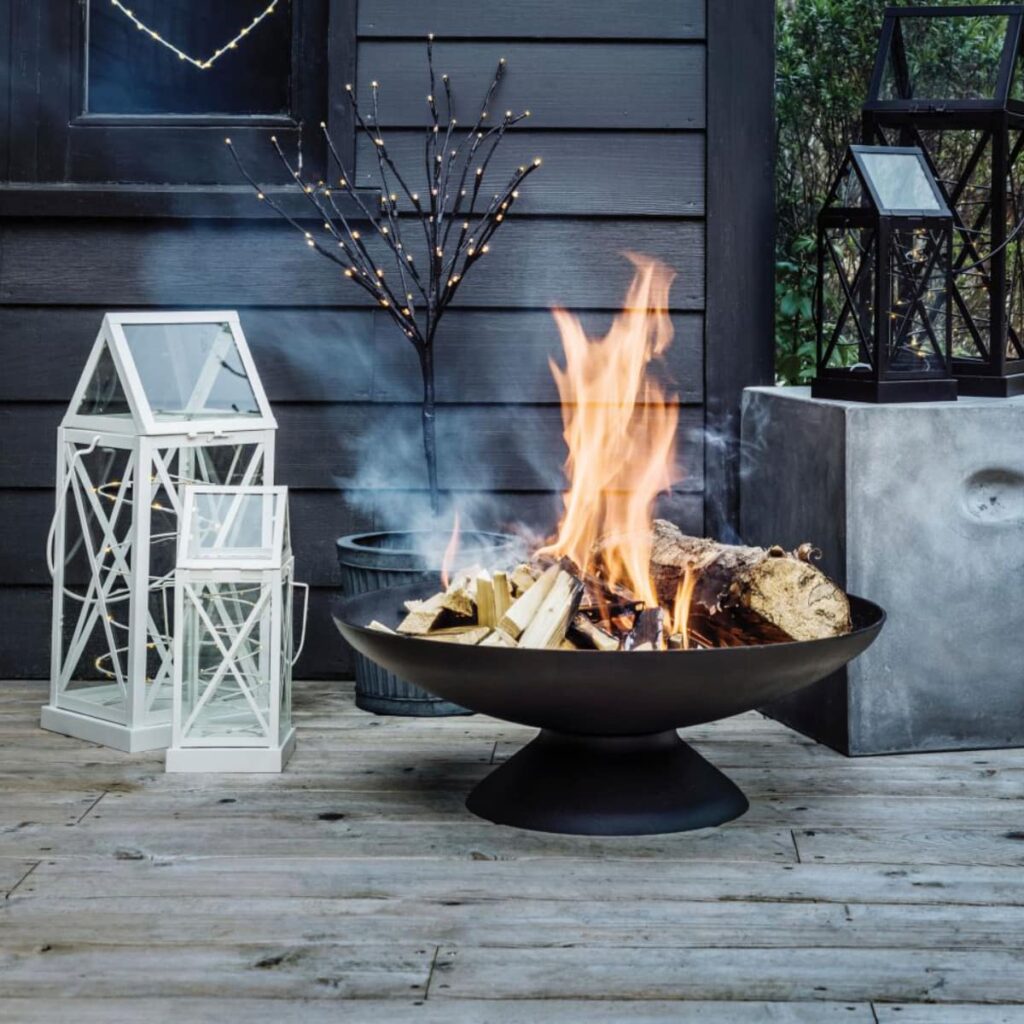
Aluminum
This lightweight metal is extremely affordable, rust-resistant and will last for years with very little upkeep. It’s also a strong conductor of heat. Aluminum firepits won’t crack or warp and have a brilliant silvery finish, unless powder-coated with paint. Its light weight makes aluminum a good choice for portable fire pits.
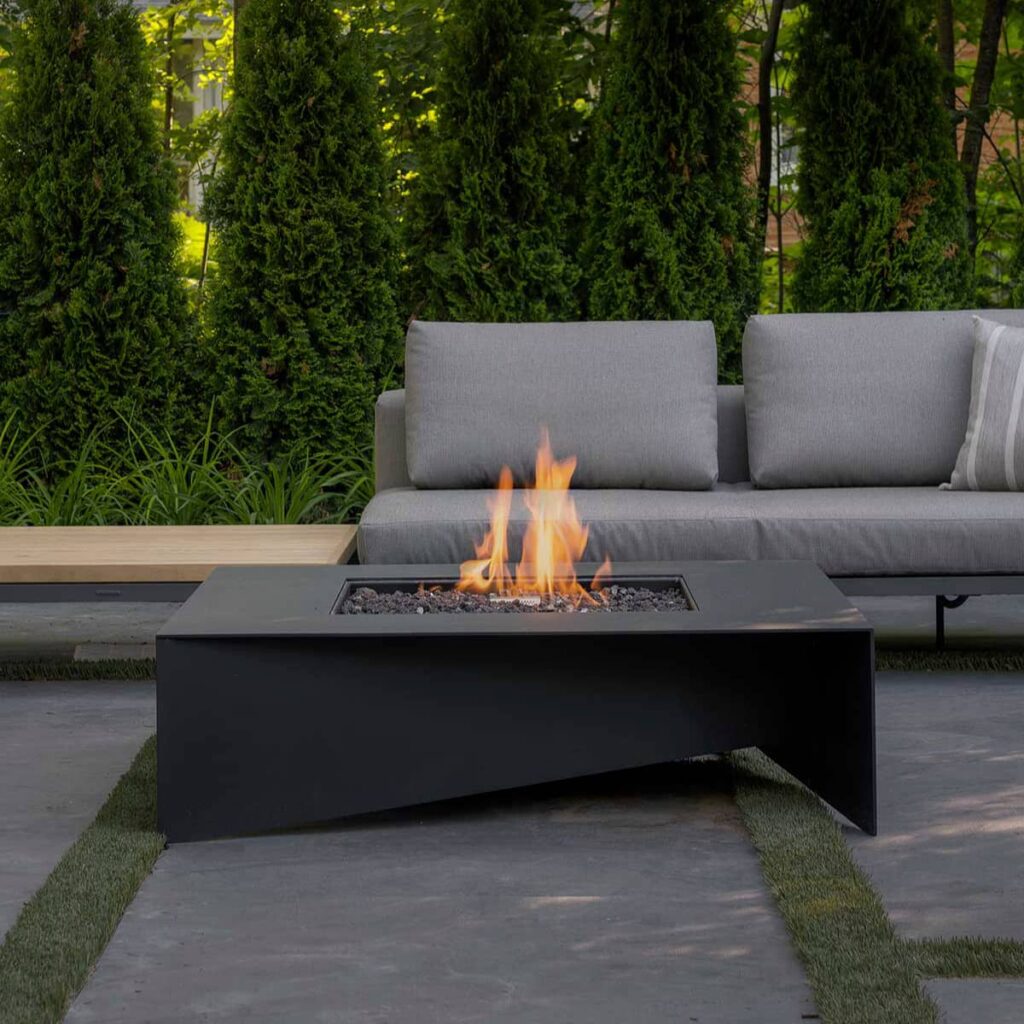
Copper
This popular element is durable, highly resistant to corrosion and the most thermally conductive common metal. If warmth is high on your list of priorities, copper is a wise choice. Its freshly exposed surface has a gorgeous pinkish-orange color, but it develops a greenish-brown patina as it is exposed to oxygen over time (think of the Statue of Liberty). Consequently, copper fire pits require frequent cleaning to maintain their original look. It’s also among the more costly metals.
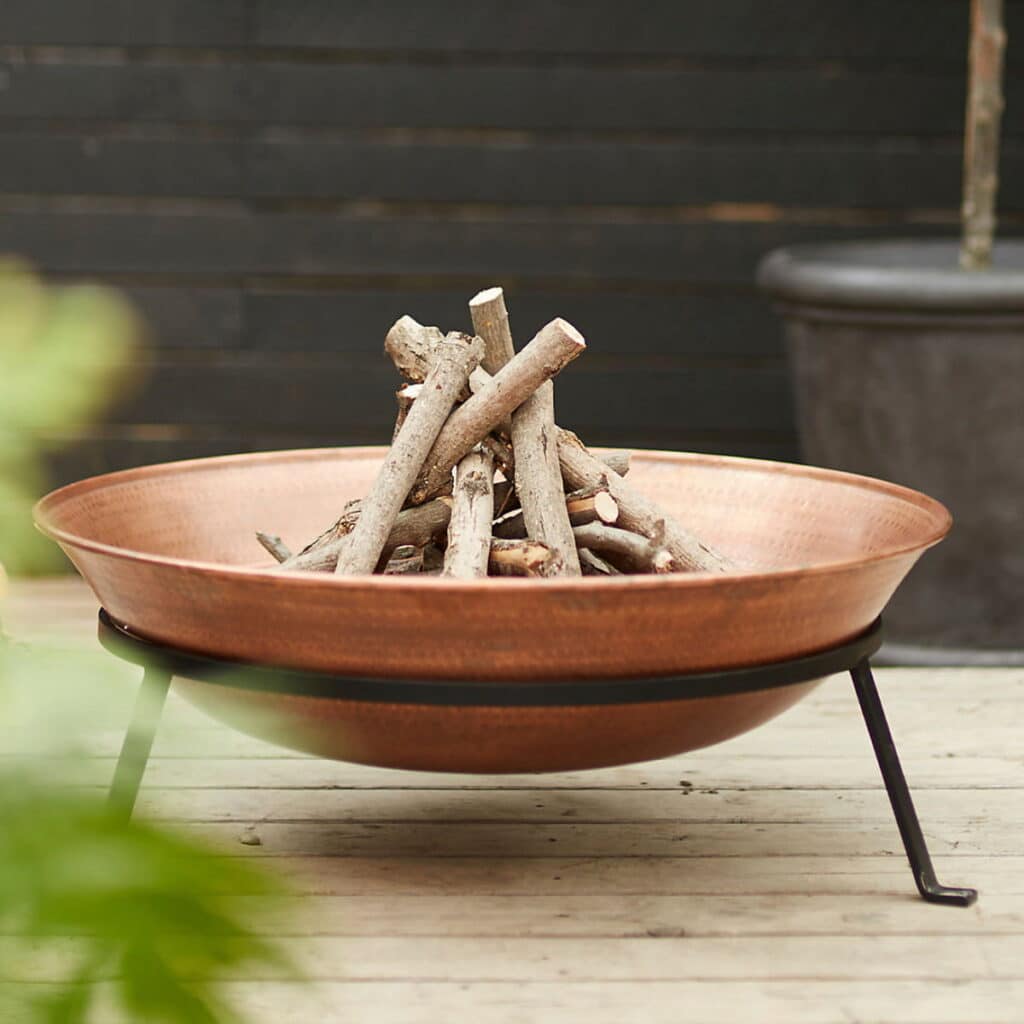
BUY METAL FIRE PITS
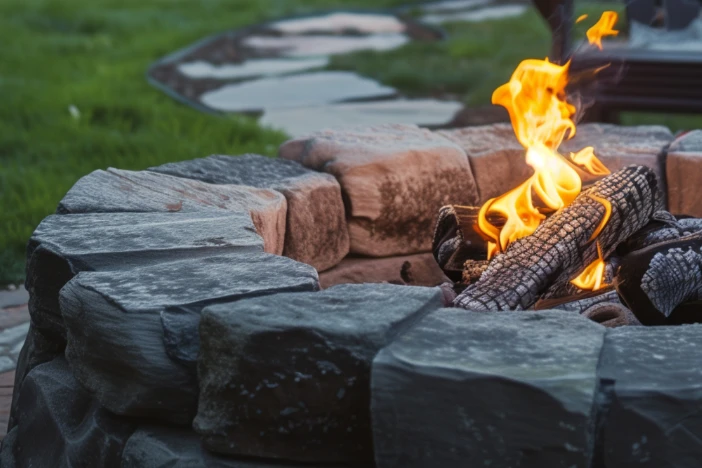
Mineral – Heat insulation & traditional style
Fire installations constructed from mineral substances vary in durability and aesthetic quality.
Stone
This natural form is long-lasting, affordable and has a distinct look and textural appeal. Stacked stone fire pits evoke pastoral images of farmhouses and gardens. They don’t conduct heat well, so firepits should be open if warmth is paramount. Solid or stone veneer firepits are not hot to the touch, so they are perfect for outdoor settings with a lot of foot traffic or small children.
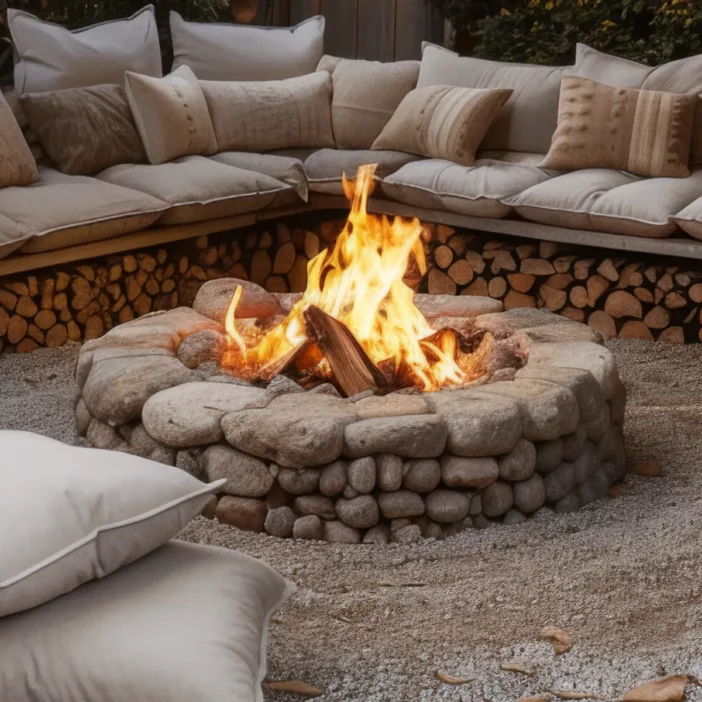
Concrete
This mixture of gravel, sand and cement can be cast in multiple shapes and acts as a natural insulator. This allows concrete and cinder block fire pits to remain cool when lit. The smooth surface of poured concrete complements minimalist decor and the substance is often used for fire tables. It’s durable but gets soot-stained over time, so it should be treated with sealant and cleaned periodically.
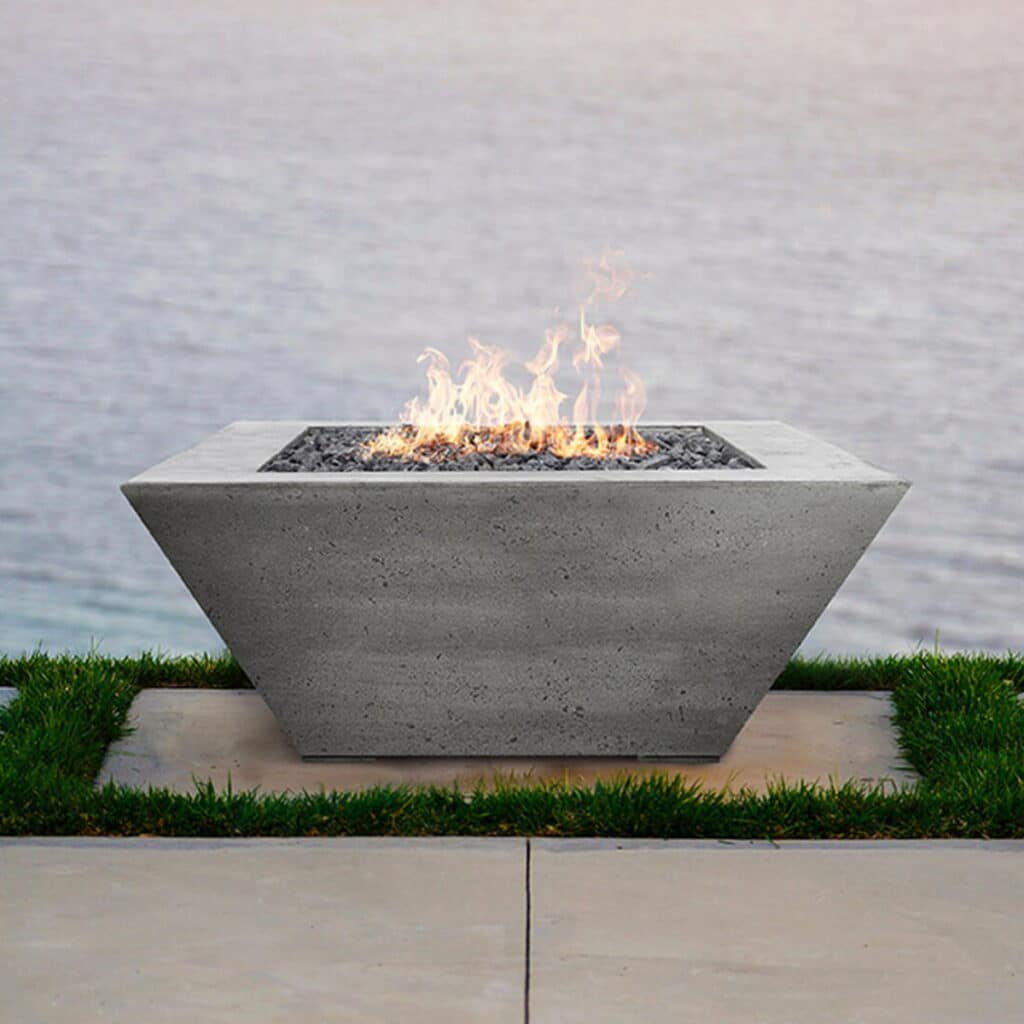
Ceramic or Clay
This moldable fine-grained substance weathers well but is somewhat fragile based on the form it takes. A painted brick firepit, for example, is much stronger than a ceramic fire bowl. Clay is heat-resistant, so it’s not as hot to the touch as metal. The surface is often adorned with geometric designs or decorative organic motifs. It’s also relatively inexpensive, so you’re not out an arm and a leg if it chips or breaks.
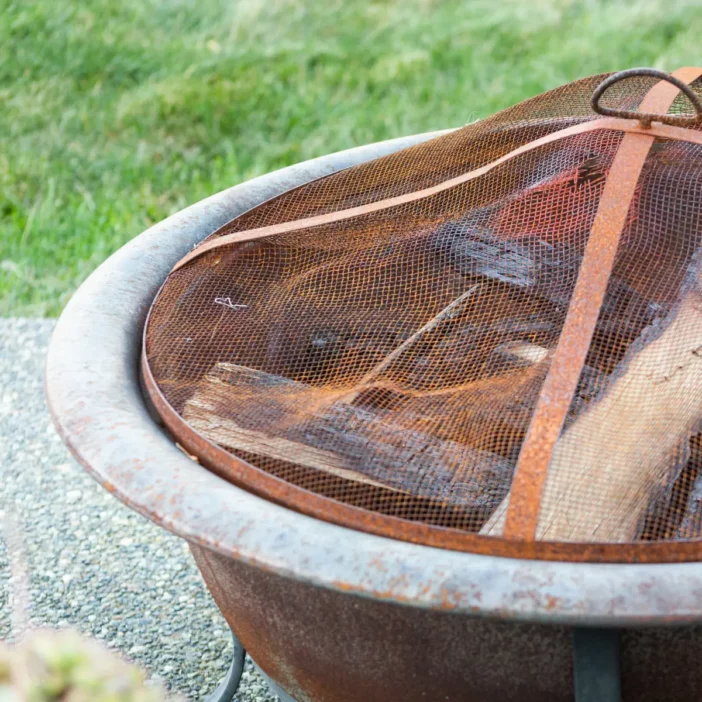
The right material means your fire feature will last
After careful evaluation, you’ve settled on the material that best suits your needs and outdoor setting. Now it’s time to turn your attention to features and accessories that could give your fire pit a little more oomph. Read the next section of our comprehensive guide to learn what’s out there.

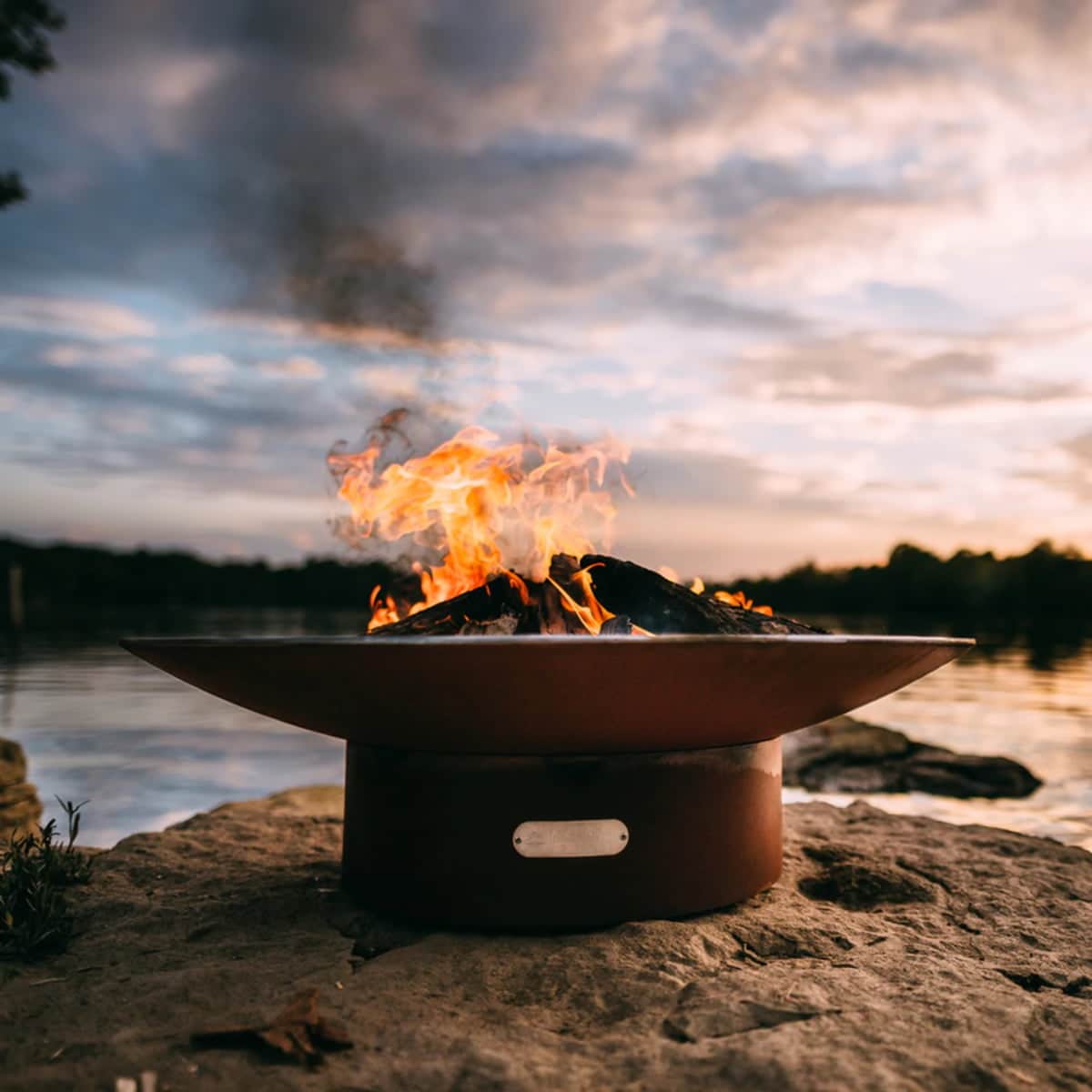
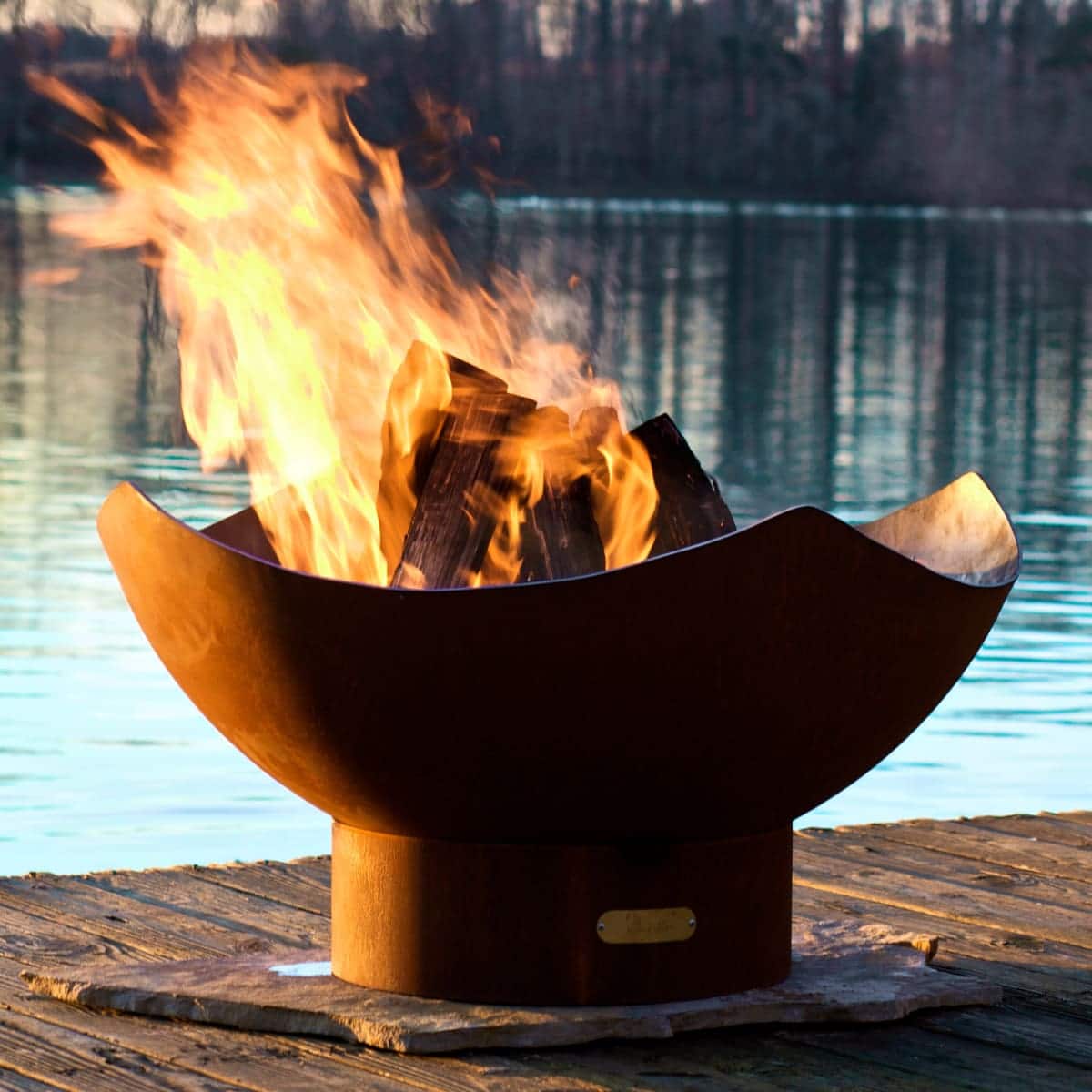
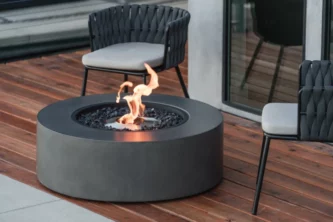
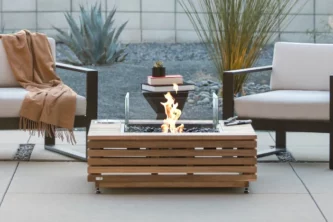
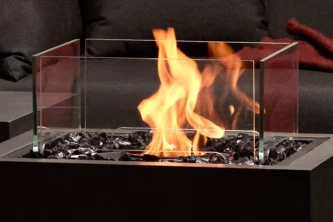
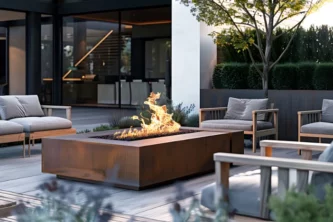
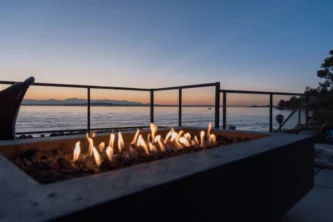




Leave a Reply